We’ve just added our most comprehensive SLEUTH™ Research section yet…

Acquiring Surface Level Learning
Surface learning refers to content and underlying skills. It is not superficial learning, but the phase of learning when students are introduced to concepts, skills, and strategies. Surface learning is essential because it provides a foundation for students to build upon when they need to think more deeply. It equips students with the tools required for further learning. It can overlap deep and transfer learning, but refers to any time when pupils are being introduced to foundational knowledge and skills that will be required when they are processing information and skills at a deeper level.
Examples of surface learning include relevant vocabulary, learning to add, learning handwriting, how to follow a recipe, learning to spell, colour mixing, ball skills, the rules of a sport, mathematical formulas, the steps in a scientific process, memorising historical facts, learning grammar rules, labelling parts of a plant, enunciating phrases in a foreign language, etc.
Hattie & Donoghue refer to the strength of “over-learning” surface knowledge, pointing out that doing so will place fewer demands on working memory while engaging in deep learning:
“During the surface learning phase, an aim is to assist students to overlearn certain ideas and thus reduce the needs of their working memory to work with these new facts when moving into the deeper understanding phase.”
Researchers rank strategies by their effect size, where 0.4 is the hinge point: anything above is in the desired zone, anything below is not. An effect size in the range 0.41 to 0.60 might be considered to have a medium impact on learning, whereas an effect size greater than 0.60 might be considered to have a high impact. The following learning strategies are ranked in order of their effectiveness, with the most effective – the greatest Effect Size (ES) – at the top.
These strategies are used at their optimal best when learners are acquiring surface level understanding:
- Strategy to integrate with prior knowledge ES 0.93
- Summarisation ES 0.79
- Outlining and transforming ES 0.66
- Mnemonics ES 0.65
- Organising notes ES 0.60
- Imagery ES 0.55
- Modality effect ES 0.55
- Record keeping ES 0.52
- Rereading ES 0.50
- Underlining and highlighting ES 0.42
- Training working memory ES 0.37
- Note taking ES 0.33
… to see more visit SLEUTH™ Field 8, Section 2.
Visit SLEUTH™ to read more on how Acquiring Surface Level Learning can help grow your pedagogy and your learners outcomes.

SLEUTH™ ‘Quick Solutions’
Reduce distractions during surface learning – Reduce complexity
Because we hold just a few ideas or facts in our mental workspace at a time (4-7), avoid these complexity traps during the surface learning phase:
- Providing unnecessary information, such as overly complex presentations.
- Complications contained within a text that are unrelated to the success criteria.
- Challenging vocabulary (remember that for good comprehension, the reader needs 95-98% word recognition.
- Text-heavy explanations when well-structured labelled diagrams would convey the same information.
Reduce distractions during surface learning – Scaffold well
Because we hold just a few ideas or facts in our mental workspace at a time (4-7), scaffold new learning well, avoiding these traps during the surface learning phase:
- Instructions that lack clarity.
- Omitting to break down information into manageable chunks.
- Launching into problem-based learning or inquiry-based learning before foundation information and skills have been embedded into long-term memory.
- Asking students to utilise two resources at the same time (the split attention effect).
- Asking learners to apply information that is no longer visible, such as when a power point slide that contains information is replaced by a slide that describes a task requiring ākonga to apply the information on the previous slide (the transient information effect).
- Moving students directly to independent work after using worked examples; instead, ask them to practise worked examples between your modelling and their independent work.
Mnemonics to assist recall of surface knowledge – Acronyms
Examples:
- PEMDAS – Parentheses, Exponents, Multiplication, Division, Addition, Subtraction (order of operations in maths).
- SOH-CAH-TOA
– Sine = Opposite/ Hypotenuse,
– Cosine = Adjacent/ Hypotenuse,
– Tangent = Opposite/ Adjacent (trigonometric functions)
- SMART – Specific, Measurable, Attainable, Relevant, Time-bound (goal-setting criteria)
Mnemonics to assist recall of surface knowledge – Acrostics
Examples:
- My Very Educated Mother Just Served Us Nachos – The order of planets from the Sun: Mercury, Venus, Earth, Mars, Jupiter, Saturn, Uranus, Neptune
- King Philip Came Over For Good Soup – The levels of biological classification: Kingdom, Phylum, Class, Order, Family, Genus, Species
- RAVEN – Remember Affect is a Verb and Effect is a Noun – Helps students distinguish between “affect” and “effect.”
These are just some of over 70 Quick Find Solutions available on SLEUTH™ in the area of Learning Strategies for Surface, Deep and Transfer Learning – Acquiring Surface Level Learning.
Want to know more?

Go to www.sleuthing.co and subscribe either as a School, Centre or individual. Alternatively if you have any questions or would like to subscribe directly with us please e-mail us on sleuthing@interlead.co.nz
Ngā Mihi
Andrew Ormsby and the SLEUTH™ Team
P 021 222 1700
E sleuthing@interlead.co.nz
W www.sleuthing.co

